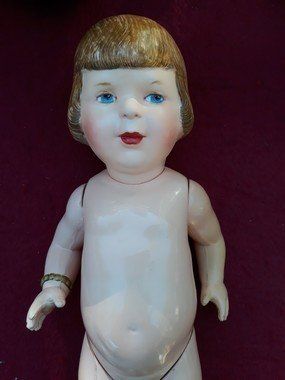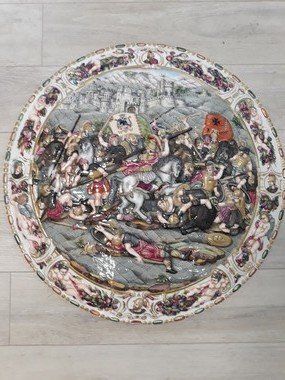Restorations
The work of dolls restoration or dolls hospital mainly concern the antique dolls going from the beginning of the 19th century to the 60's. I can intervene on art objects or objects having a simple sentimental value.
Several levels of restorations are at your disposal, from the simple reassembly of elastic until the reconstitution of a porcelain head through the restoration of the original dress or the wig. All of the following work was done in collaboration with the client trying to find the best solution for the doll to restore, to keep his story but also to respect the memories of his owner. For the preservation of your object, consult the data sheets.
For all your doll restoration projects, all your questions are welcome.
antique dolls
The philosophy concerning the restoration of antique dolls is to consider them as a decorative work of art in their own right, whose identity must be respected.
It is important to retain the majority of the original elements still present and replace them where possible with period elements. The goal is to bring a testimony of the object as originally conceived.
That's why, as part of an illusionist restoration of porcelain, I act by retouching by protecting the original colors. The products having evolved in resistance, a restoration made today will last more than that of 30 years ago, in spite of everything it is important to observe the principle of reversibility.
In the case of conservation restoration, it is important to maintain the aesthetics of the object by consolidating it to prevent it from deteriorating too quickly. The restoration will be the least interventionist possible and will remain visible.
For the dresses, if you have the original model in good condition we can consider intervening, otherwise I advice to keep it away from light and to redo a model of inspiration,
It is important to retain the majority of the original elements still present and replace them where possible with period elements. The goal is to bring a testimony of the object as originally conceived.
That's why, as part of an illusionist restoration of porcelain, I act by retouching by protecting the original colors. The products having evolved in resistance, a restoration made today will last more than that of 30 years ago, in spite of everything it is important to observe the principle of reversibility.
In the case of conservation restoration, it is important to maintain the aesthetics of the object by consolidating it to prevent it from deteriorating too quickly. The restoration will be the least interventionist possible and will remain visible.
For the dresses, if you have the original model in good condition we can consider intervening, otherwise I advice to keep it away from light and to redo a model of inspiration,
Celluloid
Celluloid or more precisely cellulose nitrate camphor or cellulose acetate was born in 1877 in the United States implemented by the Hyatt brothers. It is considered the first plastic. The largest French celluloid production center at the beginning of the 20th century was located in Oyonnax but the use of this material developed mainly in the 30s until 1955, it was banned in the 60s because of its flammable properties .
Ceramic
The restoration of old dolls and the restoration of ceramics generally using techniques, I can intervene on other objects provided that they are part of the ceramic products.
I often work on porcelain, biscuit, pottery from different periods and signatures as long as the objects are decorative and not for food use.
Wax
The restoration of antique wax dolls has naturally evolved towards the restoration of wax figurines, most often leaving private patrimony or churches. These fragile wax subjects have often been damaged, their high aesthetic quality and the care taken in their manufacture make them real works of art that are important to preserve.
This type of restoration often gives the opportunity to recreate elements a hand, a foot hair. These new paeties are made of wax respecting the color and shapes of the original model.
Sculpture
Edit, reproduce, create, rinventer









